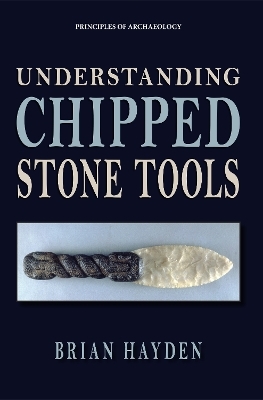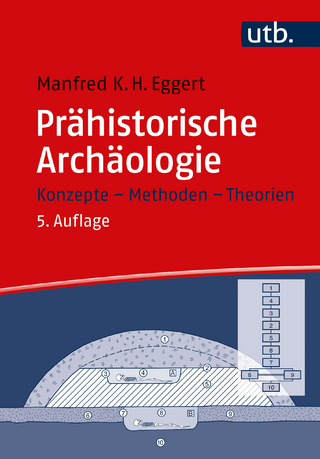
Understanding Chipped Stone Tools
Eliot Werner Publications Inc (Verlag)
978-1-7342818-6-6 (ISBN)
This is a unique and engaging book on prehistoric stone tools. It advocates an experiential approach in which analysts try to understand stone tool designs from the users' perspectives, and employs a universal logic of designing tools to solve practical problems and evaluate possible solutions. However, to do so it is also necessary to understand how stone can be mechanically modified to serve specific functions.
The author enlists a rich array of ethnographic observations and his considerable background as a flintknapper to show the basic ways in which stones can be flaked and modified and what these characteristics can reveal about prehistoric problem-solving strategies and design constraints. This is an invaluable primer for anyone contemplating the study of prehistoric stone tools.
Brian Hayden is an Honorary Research Associate in the Department of Anthropology at the University of British Columbia and Professor Emeritus of Archaeology at Simon Fraser University. He has spent the past thirty years excavating at a large housepit village in the Interior of British Columbia, and has had a longstanding interest in understanding what artifacts can tell us about the societies and cultures that left them behind in the archaeological record.
1 - Perspectives on Lithics
Perspectives: Old, New, and From the Bottom Up
What Do You Want To Find Out?
Experiential and Experimental Archaeology
My Background
Organization of This Book
Exercise
Additional Readings
2 - Design Theory
Steps in Design Analysis
Design Theory in Practice
Constraints
The Importance of Quantity
Prestige Technologies
Exercise
Additional Readings
3 - Design Theory as Applied to Lithic Analysis
End Scrapers: A Specially Designed Tool Type
The Problem
Step 1: Dehairing and Removing the Epidermis
Step 2: Defleshing
Step 3: Removing the Inner Membrane
Step 4: Stretching and Working the Hide
Step 5: Abrading the Hide
Design Lessons from Making Buckskin
Deconstructing End Scrapers: The Design Factors
Material Constraints
Task Constraints
Size and Kinematic Constraints
Skill Constraints
Technological Constraints
Quantity
Size Matters
Designing Hide-Scraping Tools
Blades and Reduction Strategies
Discussion
Exercise
Additional Readings
4 - Tier 1: Analyzing Stone Tools
Expedient, Extemporaneous, and Opportunistic Tool Use
The Nuts and Bolts of Analyzing Stone Tools: Tools and Debitage
An Artifact or Not an Artifact?
Flake Tools: The Six Sides of a Flake
Types of Edge Modification
Other Sources of Edge Modification
Unmodified Tools
Summary
Exercise
Additional Readings
5 - Tier 2: Basic Reduction Strategies and Specialized Types
Specialized Tools: Projectile Points
Spears or Arrows?
Consequences
Reduction Strategies
Hard Hammer Block Core Reduction
Blade Reduction
Bipolar Reduction
Bifacial Reduction
Levallois Reduction
Pressure Reduction
Summary
Exercise
Additional Readings
6 - Tier 3: Design Considerations Reliability
Maintainability
Versatility and Multifunctionality
Flexibility
Diversity
Other Design Considerations
Commentary
Identifying Tasks and Strategies
Types
Traditional Typologies
Contemporary Typologies
Exercise
Additional Readings
7 - Changes
Raw Materials
Geological Nomenclature versus Prehistoric Choices
Resharpening Strategies Over Time
The Oldawan
Acheulian Handaxes and Mousterian Levallois Flakes
Upper Paleolithic Blades and Bifaces
Mesolithic Microliths
Ground Stone Axes
Additional Readings
8 - Total Assemblages
Profile of the Keatley Creek Site
The Lithic Assemblage at Keatley Creek
The Block Core Strategy
Bifacial Reduction
Bipolar Reduction
Pressure Reduction
Grinding Reduction
9 - Precepts and Prospects
Getting Oriented
Prospects
Research Constraints
Additional Reading
Sources for Images
Glossary
| Erscheinungsdatum | 28.03.2022 |
|---|---|
| Reihe/Serie | Principles of Archaeology |
| Zusatzinfo | 45 illus. |
| Verlagsort | Clinton Corners |
| Sprache | englisch |
| Maße | 150 x 225 mm |
| Gewicht | 256 g |
| Themenwelt | Geisteswissenschaften ► Archäologie |
| Geschichte ► Allgemeine Geschichte ► Vor- und Frühgeschichte | |
| Sozialwissenschaften ► Ethnologie | |
| Sozialwissenschaften ► Soziologie | |
| ISBN-10 | 1-7342818-6-3 / 1734281863 |
| ISBN-13 | 978-1-7342818-6-6 / 9781734281866 |
| Zustand | Neuware |
| Haben Sie eine Frage zum Produkt? |
aus dem Bereich


